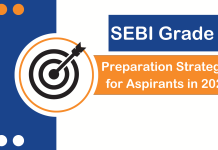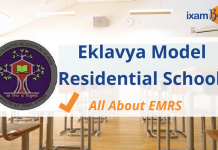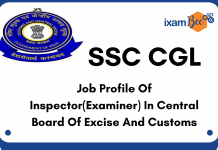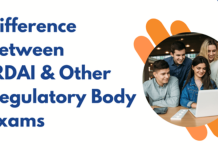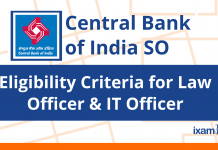Introduction to National Adult Education Programme (NAEP)
Understanding the value of adult education in a free India, V.K.R.V Rao said “It is not possible to have the range and pace of economic and social growth that we need without Adult Education and Adult Literacy”. Adult education and adult literacy should be at the forefront of every economic and social growth strategy. In this context, the National Policy Statement on Adult Education, NAEP (1977) states that while a serious effort must be established to universalize primary education up to the age of 14, educational facilities must be extended to the adult population in order to alleviate their educational deprivation and allow them to realize their full potential.
Adult Education is clearly beneficial in enabling the ignorant masses of India to comprehend the true meaning of a democratic way of life.
The National Adult Education Program (NAEP) was established on October 2, 1978, with the goal of eliminating illiteracy among adults aged between 15 to 35 years.
NAEP Aim and Objectives
The overall state of literacy in India is alarming, as the total number of illiterates has continued to rise, particularly among women and tribal people.
Over the next five years, the National Adult Education Program seeks to provide educational opportunities to all illiterates aged 15 to 35. Three points are emphasized throughout the program: (1) literacy and numeracy; (2) functional growth, i.e., an individual’s position as a producer or worker, a family member, and a citizen; (3) social awareness, which includes an understanding of growth impediments, laws and government policies, and the need for the poor and illiterate to mobilize themselves for collective development action. A brief review of program organization and execution, as well as teacher preparation, is conducted.
NAEP has drawn heavily on Gandhiji’s basic educational principles (Nai Taleem) in emphasizing the connection between working, living, and learning. NAEP’s approaches include non-formal education’s key characteristics, such as stressing relevance to the community and learners’ needs; versatility in terms of length, time, place, instructional arrangements, and so on; and diversity in curriculum and teaching and learning materials. Education is regarded as a means of man’s emancipation, in accordance with the ancient Indian goal of Vidya (sa vidya ya vimuktaye), which finds resonance in many recent thinkers.
NAEP: Modus Operandi
The Program was typically implemented as small projects. In the sense of NAEP, the term “project” was used to describe the field-level administrative unit in charge of organizing the program in a compact adjacent region with identical environmental conditions and learning needs. The project was overseen by a Project Officer, with a Supervisor assigned to each of the 20-30 adult education centers.
In each project, actual adult education programs were coordinated through a variety of centers. Priority was given to the needs of women and people from Scheduled Castes when the adult education centers were established.
A teacher will be paid an honorarium of Rs. 50 per month to coordinate a center. All field-level government functionaries, as well as other experienced individuals, assist the center’s instructor in his work. The learners will attend the adult education center for 300 to 350 hours or 9-10 months.
The program’s post-literacy and follow-up activities are an essential and integrated aspect of it. These facilities will include a library and reading space, as well as training courses for functional learning and community action, and organization events.
Organization and Administration
The National Board of Adult Education, chaired by the Union Education Minister, was established to assess the progress and implementation of NAEP on a regular basis and to advise the government on a variety of issues.
A State Board of Adult Education was established in each state to serve as a coordination and advisory body. Under the direction of the State Board, a State Adult Education officer was appointed, along with the appropriate administrative and technical staff.
It is immensely gratifying that the Indian government decided to take on the challenge of implementing the project “Education for All” by imparting education to millions of adults. In this regard, the 1986 National Policy on Education pledged to eradicate illiteracy.
Achievements of the program
NAEP was selected by a large number of illiterate people belonging to economically weaker sections. They were taught by an adult education teacher who had prepared materials for them. They were able to get the much-needed room by gathering for literacy class at a specific location and time.
This program drew a large number of people from Scheduled Castes, Scheduled Tribes, women, and other marginalized groups.
As partners in the initiative, a significant number of non-profit organizations were involved.
Limitations of the program
The NAEP Review Committee Report of 1980, as well as a number of assessment studies funded by the Department of Education (MHRD) in the 1980s, revealed that the focus of the program remained on literacy. Many adult students learned how to read and compose basic sentences and materials that were written specifically for them. Some people began to read newspapers.
The program’s development focus was just superficial. Many students did not comprehend why they were in this situation, which included problems of underdevelopment, deprivation, and poverty.
The functionality was lacking. The connection between literacy and productivity was not emphasized
Conclusion
The Government of India made the National Adult Education Programme a priority when it was initiated in 1978. By the end of five years, it hoped to have 35 million people literate. The NAEP saw adult education as a way to bring about a radical shift in the process of socio-economic growth, influenced by Paulo Freire’s thoughts. It was believed that through literacy, debate, and intervention, the illiterate and poor could achieve their emancipation.
Also Read:
WTO Vs IMF: How they are different?
RBI Grade B: Winning Strategy Part 3
List of High Courts in India As per 2021
RBI Grade B: Winning Strategy Part 2
RBI Grade B: Winning Strategy Part 1
Get Free Online Test Series, GK updates in form of Beepedia, as well as latest updates for Bank PO, Bank Clerk, SSC, RBI, NABARD, and Other Government Jobs.




